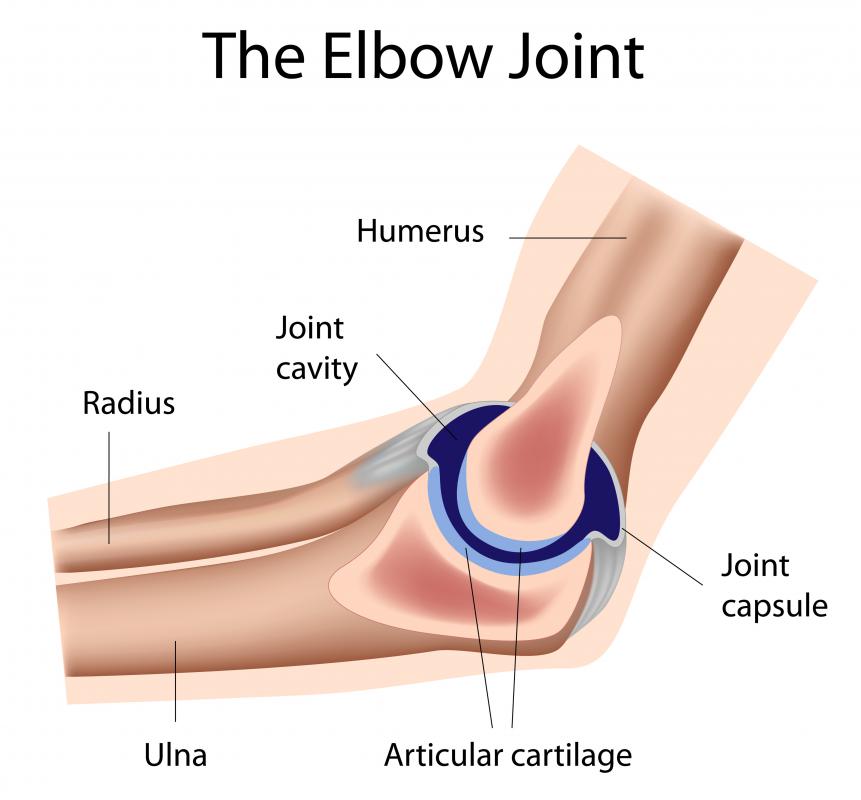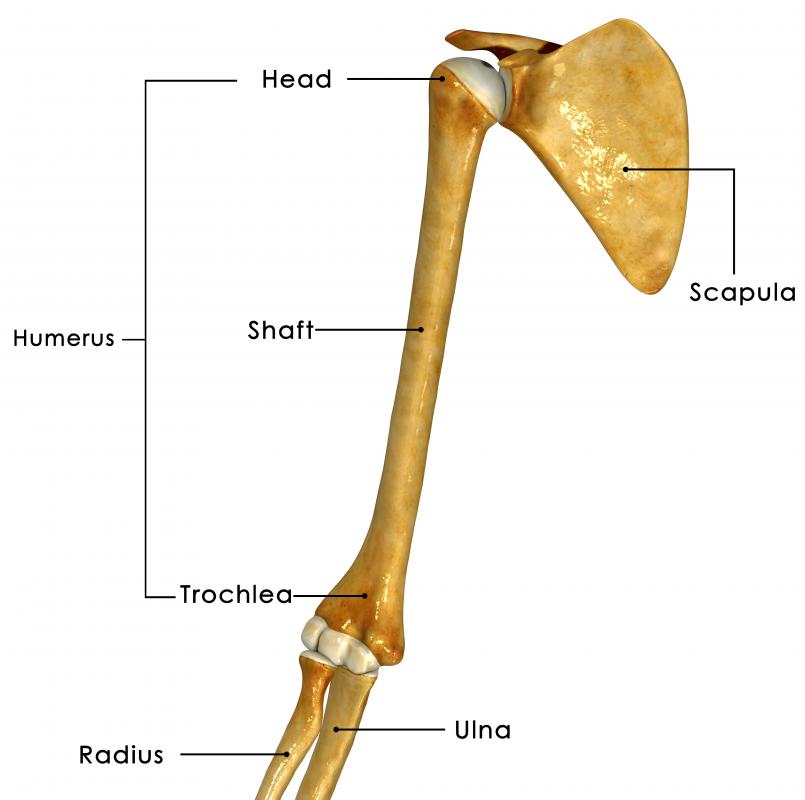At WiseGEEK, we're committed to delivering accurate, trustworthy information. Our expert-authored content is rigorously fact-checked and sourced from credible authorities. Discover how we uphold the highest standards in providing you with reliable knowledge.
What is the Anatomy of the Arm?
The anatomy of the arm consists of only three bones but a number of muscles, tendons, and nerves. At the end of the forearm are the metacarpal bones, which make up the wrist joint and attach the hand to the arm. The arm connects with the shoulder at the scapula, and in between are several long bones and large muscles that allow the arm to move and flex.
The humerus is the long, strong bone that runs from the shoulder to the elbow. The head of the bone sits in a cavity on the scapula, forming the connection between the arm and the shoulder. At the other end of the humerus is the trochlea, which forms the elbow joint, where it joins with the bones that make the forearm. The radius and the ulna are shaped a bit like a longbow; the ulna is a long bone with almost no curve to it. Running alongside this bone is the radius, which connects to the ulna at both ends and has a distinct curvature, helping to form the shape of the anatomy of the arm.

The muscle anatomy of the arm is more complicated; the arm is rotated by muscles that run between the top of the arm and the shoulder. The teres major and the teres minor are responsible for much of the side to side movement of the arm. The elbow is flexed by tension that tightens and releases in the brachialis, which joins the major bones of the arm over the elbow joint. At the inside of the elbow is a muscle called the anconeus, which allows the arm to straighten. The major muscles responsible for heavy lifting are the biceps; these easily visible muscles attach to the humerus.

Different arteries supply blood and oxygen to the various parts of the anatomy of the arm. The brachial artery runs down the humerus, supplying the forearm and hand with blood. Smaller arteries like the posterior circumflex humeral and the subscapular supply blood to the muscles of the upper and forearm.
The hands and fingers rely strongly on sensation and touch in order to function properly. Running throughout the anatomy of the arm are nerves that constantly send reports to the brain. The medial cord and posterior cord are responsible for transmitting the information received by the fingers, while the palms rely on different nerves called the lateral cord and the median. Pectoral, brachial, and musculocutaneous nerves receive information from the skin of the upper and forearm.
AS FEATURED ON:
AS FEATURED ON:














Discuss this Article
Post your comments